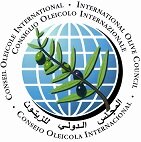(1) Slender stalk connecting the olive fruit to the tree.(2) Packing defect in processed olives where stems measuring more than 3 mm in length from the shoulder of the olive remain attached to the fruit. This is not considered a defect in whole olives presented with stem attached.
Packing defect where the olives contain any vegetable matter not injurious to health nor aesthetically undesirable, for example leaves, separated stems, except substances whose addition is authorised in the IOC table olive standard.
Packing defect caused during fermentation by certain chlorophyll derivatives other than the usual ones. The Gordal variety is particularly sensitive to this defect.
Packing defect where olives contain whole stones or stone fragments measuring more than 2 mm along their longest axis.
Packing defect where the olive is damaged to such an extent as to affect its normal structure.
Packing defect where the olives are damaged by tearing the epicarp to such an extent that a portion of the mesocarp becomes visible.
Packing defect where the olives have marks on the skin that are more than 9 mm2 in surface area and that may or may not penetrate through to the flesh.
Packing defect where the olives are so abnormally wrinkled as to affect their appearance. The slight superficial wrinkles displayed by certain trade preparations are not to be considered a defect.

